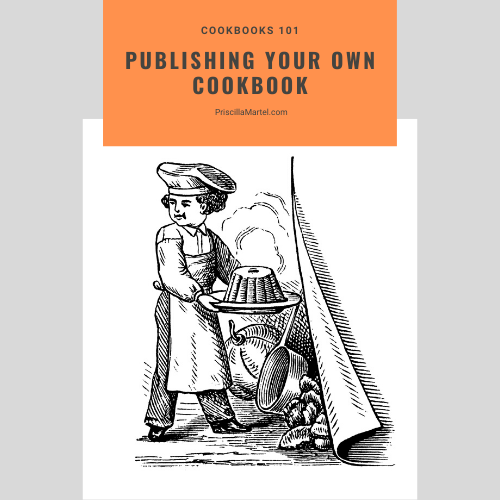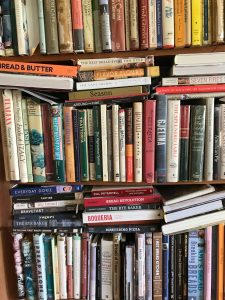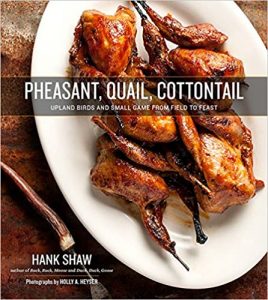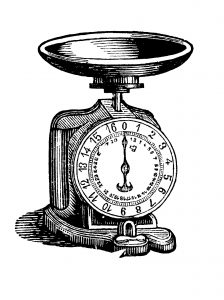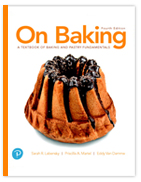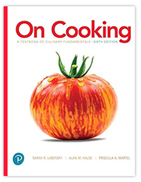Cookbooks sell. Entering 2020, cookbook sales increased by more than 15% from prior years. Now, with so many people stuck cooking at home, they need tools to help make meal time fun. If you have ever considered publishing you own cookbook, the time is right time to plan such a project.
Self-publishing cookbooks is a time-honored way to build community and raise funds. Have you ever wanted to write a keepsake cookbook? Or write one to benefit your town, a school, or organization? How great would it be to have a cookbook that supports your local farmers market or soup kitchen?
Get to it. Publishing your own cookbook is easier than ever.
I put together this information for my students in Food Writing at Gateway Community College. But it seems like something more people will find useful.
Writing Your Own Cookbook
Writing a cookbook requires inspiration, energy, an ability to cook, an ability to write and organization. This is not meant to dissuade you. Instead it’s meant to help you put a realistic framework around your aspirations. This post focuses on the mechanics of getting your work printed. I will cover the specifics of developing a cookbook concept, creating and testing recipes and illustrating your cookbook in other posts.
I was recently called out for our cookbook collection and food reference library, a fraction of which is shown here. There is plenty of room for more books. Write one!
Traditional Cookbook Publishing
In cookbook publishing, there are traditional publishers and custom publishers. Traditional publishers buy the rights to publish an author’s work. You compete to get your book accepted. You submit your manuscript, go through edits and revisions. And then – voila – your book appears in print. Many people feel there is prestige associated with having a book published by one of the major companies such as Artisan/Workman, Chronicle Books, Crown Publishing, Harper Collins, Knopf, Penguin Random House or Ten Speed Press among many others.
A traditional publisher may pay an advance, a sum of money against future sales for the rights to publish the work. (Or they may buy the work outright.) And usually they agree to pay the authors a percentage of net sales called royalties as the book sells. In exchange, the publisher will edit, design, print and distribute the book to resellers.
Custom Cookbook Publishing
In custom publishing, the variables change. Often the author pays for all costs associated with printing their work. The custom publisher produces the book and may store inventory. They may distribute the book to resellers like Amazon or Barnes and Noble. This is also known as self-publishing.
Individuals, organizations and companies use custom publishers for their projects. Perhaps a manufacturer has a new toaster oven and wants a book to sell along with the appliance. The manufacturer might want to use recipes from its staff and include information about its products in the book. Or a food manufacturer might want to celebrate its 200th anniversary with a cookbook and company history. Such books might not attract the interest of a traditional publisher. But the food manufacturer might have its own audience.
Eat Real Rice, for example, was produced by the USA Rice trade organization and Favorite Recipes Press.
(I worked on the Smuckers: 100 Years of Family-Made Goodness, Anniversary Recipe Book, which the company self-published.)
The level of quality and support offered by custom publishers varies greatly. Many offer all the editorial and design services of a traditional publisher. Others are more like the local print shop; you submit the finished designed for them to print. In such cases you’ll need design skills in addition to well-tested recipes and high-quality photography.
Here are some specifics about different publishing and printing options.
Custom Cookbook Publishers
Favorite Recipes Press was one of the original self-publishing houses for personal cookbook projects. Because the author(s) pays for the books, no topic is out of reach. Popular Nashville and a judge on Food Network’s Chopped, Chef Meneet Chauhan used Favorite Recipes Press for her book, Flavors of My World.
Wimmer Cookbooks publishes nothing but community cookbooks. It’s like dealing with a traditional publisher but you or your organization must pay for the books. I believe that they will store your inventory and ship it to book distributors and stores like Barnes and Noble and Amazon.
Create My Cookbook is their division for simple self-publishing. There are templates and some design help. You upload, order and pay. They ship the books to you. Some people say it is easy to use. Other authors say the process is daunting. Overall people say they like the results.
Like Create My Cookbooks, Simply Cookbooks offers templates, editorial help and a web site where you can design, upload, order and pay to have your cookbooks printed. They also supply a media kit to help you promote and market your book, a useful feature. (Simply Cookbooks is a division of Morris Cookbooks.)
Watch this video series to get a good feel for the process of working with Simply Recipes.
Designing and Self-Publishing Your Cookbook
With easy access to design tools, anyone can become a desktop book publisher. And anyone can publish their own printed materials. And even win distinguished book awards for their efforts. Pheasant, Quail, Cottontail: Upland Birds and Small Game from Field to Feast by Hank Shaw, for example, was self published. It won the International Association of Culinary Professionals best self-published cookbook in 2019.
If you are comfortable with desktop publishing, one of the services listed below might be of interest. Again, they publish and print your book for a fee. And you must assume the responsibility of warehousing, distributing and selling the book all on your own. Of these three, only Blurb has cookbook templates.
Pressbooks for Self-Publishers
Self-Publishing Cookbook Sites with Fees
These two are among many that help you gather your recipes and develop them into family or community cookbooks that you will pay to have printed. The fee entitles you to become part of their community and learn how to do this with the support of others. Fees may be often waived for first month.
Self-Publishing E-books
This is a free platform that allows you to produce an eBook and iPad App. You can then give away or sell your eBook or app. They ask to the rights to share your recipes on their BakeSpace web site. But this is optional. Apple does collect a fee for the sale of each copy of any App sold on its site. It launched 8 years ago.
Reading this post might nudge you to pursue a cookbook project. Use the information to explore costs. Know that developing a cookbook concept, delicious, well-written, tested recipes and attractive illustrations help ensure your success. This article might be useful as you explore the costs associated with self publishing a book. More on these topics coming.

